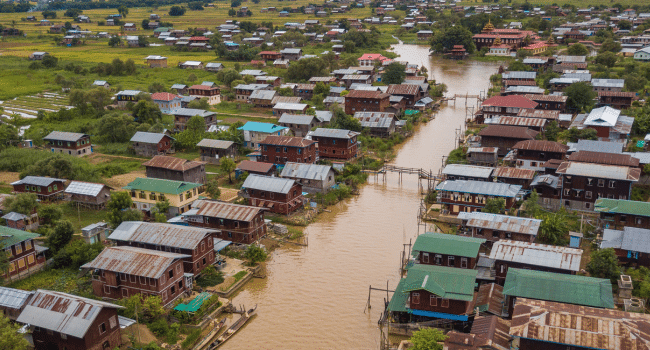Table of Contents
As climate change continues to impact our planet, the frequency, and intensity of extreme weather events, including floods, are on the rise. Protecting your home from potential flood damage is crucial for the safety of your family. The following are six effective ways to guard your home for the future.
Maintain Proper Drainage Systems
A well-functioning drainage system is the first line of defense against flooding. Regularly inspect and clean gutters, downspouts, and drains to prevent blockages that can cause water backup. Ensure that water flows away from your foundation by extending downspouts and installing drain pipes. Consider installing a French drain or a sump pump to collect excess water and divert it away from your home, alongside using the best flood barriers to enhance protection against flooding. Regularly check your sewage system to prevent sewer backups, which can lead to indoor flooding. By maintaining proper drainage, you can minimize the risk of water accumulation around your home.
Landscape with Flood-Resistant Techniques
Landscaping plays a vital role in flood prevention. Plan your landscape in a way that promotes water absorption and runoff control. Create swales, which are shallow ditches, to direct water away from your property. Plant native trees, shrubs, and grasses that have deep root systems and can absorb excess water. Build rain gardens, which are shallow depressions designed to capture and filter rainwater, thereby reducing runoff. Additionally, consider constructing raised flower beds or using permeable materials for walkways and driveways. These techniques help mitigate flood risks by allowing water to infiltrate the ground instead of accumulating on the surface.
Install Flood Barriers and Sealing Systems
Investing in flood barriers and sealing systems is an effective preventive measure. Flood barriers, such as flood doors and window shields, provide a physical barrier against rising water levels. They are particularly useful in flood-prone areas. Waterproofing sealants and coatings for walls, floors, and foundations can help prevent water penetration during heavy rainfall or flooding events. Installing check valves on sewer lines prevents the backflow of sewage into your home. Consider using flood-resistant building materials, such as treated wood and concrete, to minimize water damage. These measures offer an additional layer of protection to safeguard your home against potential floods.
Elevate Essential Utilities and Appliances
Water damage can be devastating, especially if it affects essential utilities and appliances. Elevate electrical panels, switches, and sockets to higher levels, away from potential water exposure. Raise heating, ventilation, and air conditioning systems, as well as water heaters, above the expected flood level. Consider installing battery-powered sump pumps to remove water in case of flooding. By raising these critical components, you minimize the risk of electrical hazards and costly damage to appliances, ensuring their functionality after a flood event.
Secure Your Basement
Basements are particularly vulnerable to flooding due to their location below ground level. If you are in the Denver area, consider speaking to an expert in flood damage restoration in Denver for the most in-depth basement tips. Apply waterproof coatings to basement walls and floors to create a barrier against moisture. Install a basement drainage system with a sump pump to remove excess water. Consider installing a backflow preventer on your main sewer line to prevent sewer backups. Store valuable items and documents in waterproof containers or on elevated shelves. Regularly inspect and maintain your basement to address any potential vulnerabilities before they lead to flooding.
Obtain Flood Insurance
Even with the best preventive measures, it’s essential to have a safety net in case of a severe flood event. Obtain flood insurance to protect your home and belongings. Standard homeowners’ insurance typically does not cover flood damage, so a separate flood insurance policy is necessary. Research your options and select a policy that adequately covers your needs. Remember that most flood insurance policies have a waiting period before they take effect, so don’t delay in obtaining coverage.
Fighting Floods Is a Neverending Battle
Prevention is key when it comes to avoiding floods in your home in the future. By maintaining proper drainage, landscaping with flood-resistant techniques, installing flood barriers, elevating essential utilities, securing your basement, and obtaining flood insurance, you can significantly reduce the risk of flood damage. Act now to protect your home and ensure the safety and well-being of your family in the face of changing climate patterns.
Read More on KulFiy
How to Prepare Your Home For Sale
Why home sellers in Toronto, Ontario should consider working with a real estate agent
The Housing Bubble, and Whether Now Is a Good Time to Sell Your Home
